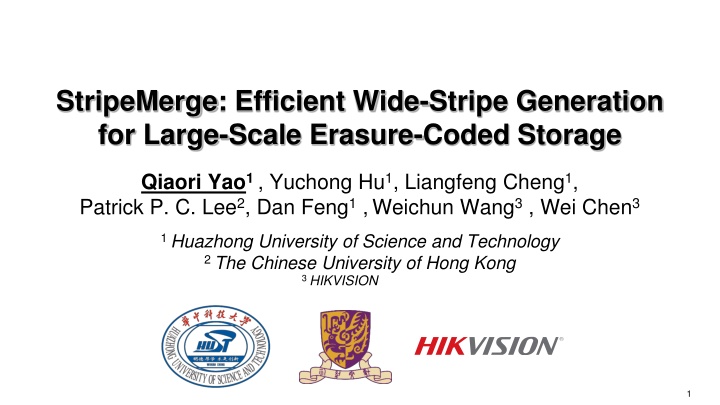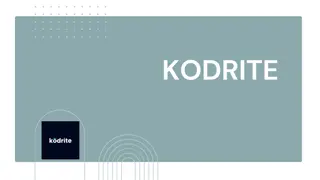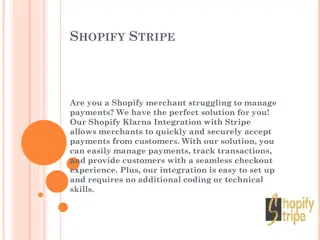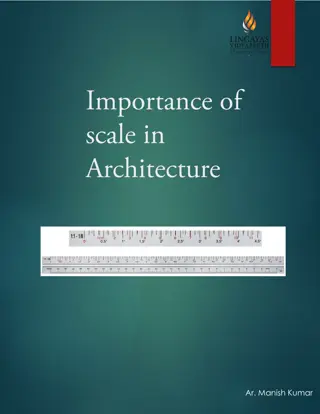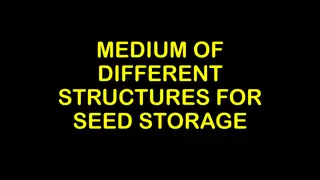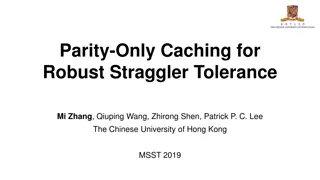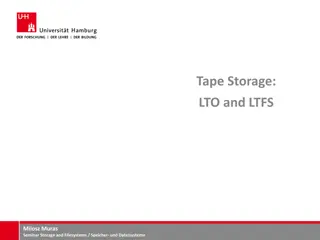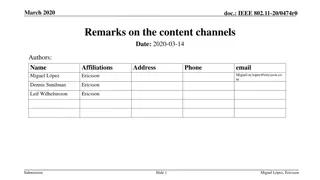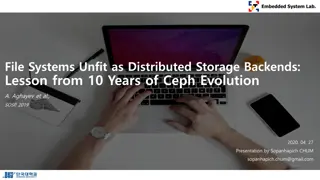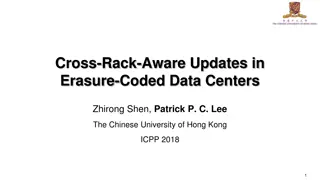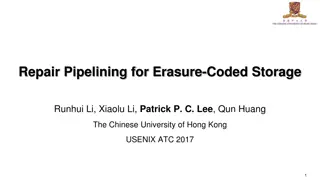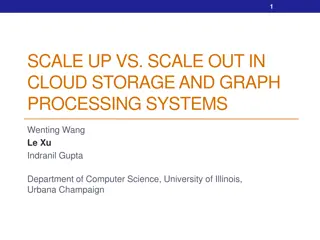Efficient Wide-Stripe Generation for Large-Scale Erasure-Coded Storage
This research discusses StripeMerge, a method for efficient wide-stripe generation in large-scale erasure-coded storage systems. It addresses challenges in data transfers, merging stripes, and perfect merging to achieve storage savings and fault tolerance.
Download Presentation

Please find below an Image/Link to download the presentation.
The content on the website is provided AS IS for your information and personal use only. It may not be sold, licensed, or shared on other websites without obtaining consent from the author.If you encounter any issues during the download, it is possible that the publisher has removed the file from their server.
You are allowed to download the files provided on this website for personal or commercial use, subject to the condition that they are used lawfully. All files are the property of their respective owners.
The content on the website is provided AS IS for your information and personal use only. It may not be sold, licensed, or shared on other websites without obtaining consent from the author.
E N D
Presentation Transcript
StripeMerge: Efficient Wide-Stripe Generation for Large-Scale Erasure-Coded Storage Qiaori Yao1 , Yuchong Hu1, Liangfeng Cheng1, Patrick P. C. Lee2, Dan Feng1,Weichun Wang3, Wei Chen3 1 Huazhong University of Science and Technology 2 The Chinese University of Hong Kong 3 HIKVISION 1
Erasure Coding A widely adopted redundancy technique An alternative to replication Low-cost fault tolerance Data Divide D1 D2 D3 Dk Encode Reed-Solomon (RS) codes ?,? : ? data chunks Stripe: ? + ? chunks, stored in ? + ? nodes Redundancy: ?+? P1 P2 Pm encoding matrix ? parity chunks Distribute ? (? + ?) nodes 2
Wide-stripe Erasure Coding Wide stripes: Goal: extreme storage savings Definition: very large ?, small ? ; redundancy: ?+? 1 ? Our previous work: ECWide[FAST 21] How to generate a wide stripe? Natural idea: direct generation Expensive repair: retrieve k chunks to repair one chunk Our idea: tiered generation Motivation: access frequency is high at first, but decreases as data age Re-encode Narrow stripes (small k) Wide stripes (large k) Original data Low access frequency High access frequency 3
Problem Re-encoding in tiered generation 1. Relocate data chunks 2. Regenerate parity chunks Challenge Substantial bandwidth overhead in data transfers How to mitigate data transfers during wide-stripe generation? Problem: Two (?,?) stripes merge into a (2?,?) stripe P1 P2 a b Q1 Q2 a b c d P1 P2 c d 4
Perfect Merging Generation without any transfer Idea: both data and parity chunks are locally generated Definition of Perfect Merging: 1. Data chunks reside in different nodes 2. Parity chunks have identical encoding coefficients and reside in the same nodes Insight: Vandermonde-based RS codes allow local generation of new parity chunks, by using old parity chunks as input 5
Our Contributions The first to address the wide-stripe generation problem Model: Formulate this problem with bipartite graph model Prove the existence of an optimal scheme that exploits the perfect merging property, but it has prohibitive algorithmic complexity Algorithm: StripeMerge a) A greedy heuristic algorithm that reduces the algorithmic complexity b) A parity-aligned heuristic algorithm that further enhances the former Evaluation: Significantly reduces data transfers for wide stripe generation by up to 87.8% over a state-of-the-art storage scaling approach 6
Bipartite Graph Model Formulate the problem Background: a large-scale storage system with N nodes, sufficiently large number of (?,?) narrow stripes, randomly placed chunks Goal: select all pairs of narrow stripes that satisfy perfect merging Model: bipartite graph (see details in the paper) Existence: Theorem 1 Conclusion: when the number of narrow stripes is sufficiently large, 0-cost merging scheme always exists theoretically. (see details in the paper) Infeasibility in practice High algorithmic complexity: ?(?2.5), maximum matching problem on a bipartite graph A large number of stripes required: only a limited number of stripes in practice 7
StripeMerge-G Naive greedy heuristic Idea: transfer chunks to satisfy perfect merging Merging cost: the number of transferred chunks Algorithm: 1. Get merging costs of all pairs; 2. Select the minimal pair of stripes every time Time complexity: ?((? + ?)?2); still time-consuming N1 N2 N3 N4 N5 N6 N1 N2 N3 N4 N5 N6 b b a a c a+b a+2b d a+2b +22c+ 23d a+b+ c+d c c+d d c+2d cost=3 Step 2 Step 3 Step 1 8
StripeMerge-P Parity-aligned heuristic Main idea: Parity-aligned: parity chunks have identical encoding coefficients and reside in the same nodes Search in parity-aligned sets, in order to rapidly merge a large number of stripes Hash table : accelerate the construction of parity-aligned sets Algorithm: 1. Search for pairs in parity-aligned sets 2. Select the minimal one in 1. every time 3. Use StripeMerge-G to deal with remaining stripes Time complexity: ?( ? + ? ??) in the best cases (see details in the paper) 9
Example Example of StripeMerge-P 1. Get the stripes 2. Build the hash table 3. Call StripeMerge-P 4. Call StripeMerge-G to deal with remaining stripes 5. Get the scheme of merging narrow stripes into wide stripes (see details in the paper) 10
Evaluation - Simulations (see more in the paper) StripeMerge significantly reduces the wide-stripe generation bandwidth of the state-of-the-art storage scaling approach in all cases, up to 96%. 11
Evaluation - Experiments (see more in the paper) StripeMerge significantly reduces the overall wide-stripe generation time of the state-of-the-art storage scaling approach under the same parameters of (?,?) , up to 87.8%. 12
Conclusions Propose StripeMerge, a novel mechanism that merges narrow stripes to efficiently generate wide stripes for large-scale erasure- coded storage Prove the existence of an optimal scheme for wide-stripe generation via bipartite graph modeling Two practical heuristics to realize efficient wide-stripe generation Evaluations demonstrate the wide-stripe generation efficiency of StripeMerge over state-of-the-arts Source code: https://github.com/yuchonghu/stripe-merge 13
THANK YOU Contacts: Yuchong Hu yuchonghu@hust.edu.cn Patrick Lee pclee@cse.cuhk.edu.hk Qiaori Yao yaoqr@hust.edu.cn 14
